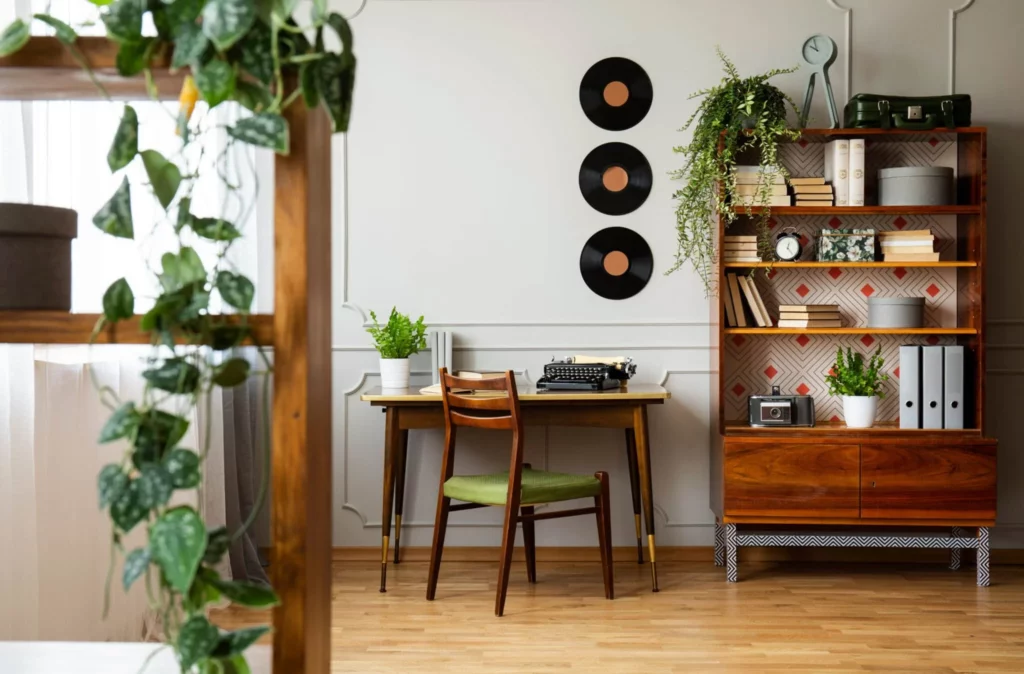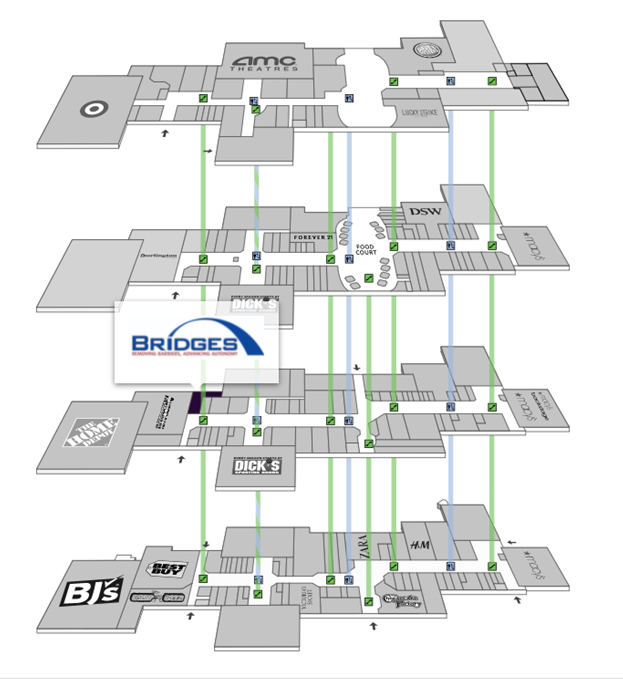
We’re more stressed than ever. According to the American Psychological Association, more than a quarter of adults report being too stressed to function. We’ve heard of the best practices to manage our stress (like eating well, exercising, and incorporating self-care into our daily routine), but have you considered whether your “home sweet home” contributes to your overwhelm?
“Many people underestimate the palpable link between their physical space and their mental well-being,” says Amy Bloomer, who has a master’s degree in organizational psychology and is a professional organizer and founder of Let Your Space Bloom. “The key is to create a space you adore, which inspires you to be the person you want to be.”
Fortunately, you can de-stress your home without sacrificing your personality, style, or precious time. The goal is to create a tranquil and therapeutic environment to help you recharge after a long day. With the help of psychologists, interior designers, and other experts, here are tried-and-true tips to turn any space into your personal sanctuary.
Visual Changes to De-Stress Your Home
To start, reduce visual stressors. “A busy and chaotic home environment can cause stress and anxiety, whereas an organized and serene setting can promote tranquility and relaxation,” says Jason Shiers, a psychotherapist with United Recovery California. Here are five visual changes you can make to boost mental health.
Open the Home to Natural Light
Pull back those curtains, open your blinds, and let the light in. Not only do the sun’s rays provide a healthy dose of vitamin D, but natural light also improves your mood and even helps you sleep better.
Use mirrors to reflect sunlight onto other walls and brighten up otherwise dark nooks and corners. If energy efficiency or keeping the house cool is a concern, consider replacing windows with more modern, eco-friendly options.
Be mindful of your view, too. “Your eyes may be the windows to your soul, but your soul will respond to what the windows of the home overlook,” says psychologist Gregory Cason. “Views of plants, trees, gardens, and water can be the most relaxing. Long views of far fields, rolling hills, and natural landscapes can have an antidepressant effect.”
Repaint the Walls for a Calming Effect
Much like natural light, color can also influence our moods. For a more relaxed, spa-like atmosphere, paint your walls blue or green, or go with a neutral palette.
“Neutrals in ranges of whites, taupes, and warm wood are calming to be around,” says Amber Dunford, an interior designer with a master’s degree in clinical psychology. She also recommends using bold colors intentionally. “In nature, earthy neutrals appear in the largest proportions, while bold pops of color show up in smaller amounts in flowers and plants.”
Declutter Common Areas of the Home
Clutter is not only a distraction; it can negatively impact your mental health. “Clutter makes us feel tense and requires more of our mental attention. We tend to focus more on overflowing stacks of paperwork or piles of toys, as our brains cannot mentally arrange clutter in the same way we can with tidy stacks or organized bins,” says Dunford.
Laura Price, a professional organizer and founder of The Home Organisation, advises her clients to be “ruthless” when decluttering. “Take everything out and ask yourself if you really need that item in your home before putting it back. The process will lift a weight off your shoulders, reveal things you’d thought you lost, and most importantly, the reduced volume of things in your home will create physical and mental space.”
Reduce Patterns and Simplify Decor
Busy patterns can activate or energize, so a “less is more” approach can help create a serene atmosphere. “Simplify your color scheme and use of patterns. If you mix and match too many patterns, color schemes, or textures at once, it can be overwhelming and stressful,” says Holly Schiff, a licensed clinical psychologist based in Greenwich, Connecticut.
Use Lamps Instead of Overhead Lighting
Opt for a soft glow in specific areas to evoke a sense of calm. While overhead lights are great when you need to brighten a whole room, they can sometimes be too much and intrusive.
Jamie Gasparovic, principal and founder of Studio Gaspo, recommends staying away from overhead lights and going with layered lighting instead. “Think table lamps, sconces, and picture lights. Using a bulb with a temperature of 2700K provides a warm light that gives your space a cozy and intimate feel and is much more relaxing than a harsh recessed light,” she says.
Sensory Changes to De-Stress Your Home
There’s more to creating a calm environment than what you can see, literally. Just walk into any spa, and you’ll notice that sounds, scents, textures, and personal touches play important parts too.
“When I’m designing a space that I want to feel zen, I take all five senses into consideration,” says Gasparovic. “Think beyond just what the eye can see, like using upholstery that has a soft hand. Touching something soft and cozy gives a soothing psychological response, which clients often equate to comfort and value.”
Touch and Textures
Introduce soft and soothing textures to help reduce anxiety. Studies into the tactile sense suggest that our sense of touch can help calm us in the same way a guided meditation can. “It’s incredible how much texture can influence how we feel. We are tactile creatures and respond well to soft fabrics and textiles,” adds Dunford. “While natural fibers like jute, sisal, or seagrass are great for durability, they can be irritating to the skin and not as comfortable to the touch.”
Don’t forget about ergonomics. While not every piece of furniture in your home needs to be comfortable, you should have at least a couple of pieces dedicated to relaxation. For example, a supportive chair can relieve pressure off your back or allow you to kick up your feet.
Use Scents That You Love
We’ve used the power of aroma to treat mental and physical health for centuries. Open your windows to let in fresh, natural scents and increase airflow. There are also a variety of candles and essential oils designed to relieve stress. While lavender is a popular option, scents like bergamot, chamomile, grapefruit, sandalwood, jasmine, and others have also been proven to increase comfortability and relaxation.
Scents can also trigger memories, good or bad. “Any pleasant nostalgic scents are great for stress relief. If you have a pleasant association with a scent, like the pine scent from a cabin you stayed in during family vacations, this would be one I’d suggest incorporating into your home because it will trigger happiness for you.”
Add Houseplants and Flowers
Whether you love aromatic flowers or simply enjoy watching and caring for plants, indoor greenery can help reduce stress.
“Having plants in your home, even if they are fake, can be helpful for your mental health,” says Schiff. “They create a more serene and soothing environment and send a ‘nature’ signal to the brain which can calm the nervous system. Seeing anything related to nature and greenery helps your brain and body feel more relaxed and calm.”
Soundscapes and Music
Use music and nature sounds to reduce anxiety and manage your stress. A study by the University of Nevada, Reno, found that music with slower tempos relaxed the mind and muscles. While Native American, Celtic, and Indian music are reportedly the most relaxing, the important thing is finding the right sounds for you. It should be calming, but not so much that you fall asleep.
A white noise machine can help reduce or eliminate distracting sounds. Dunford explains, “We can develop a coping strategy to predictable and rhythmic sounds, like the hum of an air conditioner or the ticking of a clock. But we are easily stressed by unpredictable sounds like intermittent beeps, hammering, or clanking.” A white noise machine may even help with sleep. A 2017 study found that adults who used a white noise machine fell asleep 38% faster.
Curate Happiness
Displaying photos of positive and happy moments can serve as a mental escape and reduce anxiety, stress, and even pain. This can mean anything from your favorite vacation photos or pics of your furry friends.
Dr. Cason suggests surrounding yourself with reminders of happiness. “Photos, mementos, objects d’art, furniture, and other design cues can call to mind a time and place when you have been happy. These cues can even be in the architecture of the space. If you prefer (or can’t avoid) a space that has more objects and furniture, make sure your eye always lands on something that cues happiness.”
If pictures of your family bring about anxiety instead, try a photo of nature for a calming effect. Even just a couple of minutes can help change your mood.
In Conclusion
Your home has the power to be an oasis of peace that rejuvenates and replenishes your soul without sacrificing your style. Implementing just a few of these tips can make a noticeable difference in your stress levels and mood. Whether you decide to declutter, paint your walls, tear them down, or add some greenery, how you take action is up to you. Just remember, your home should alleviate stress and anxiety, not be the source of it.




